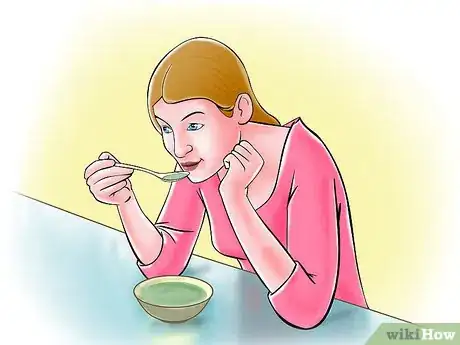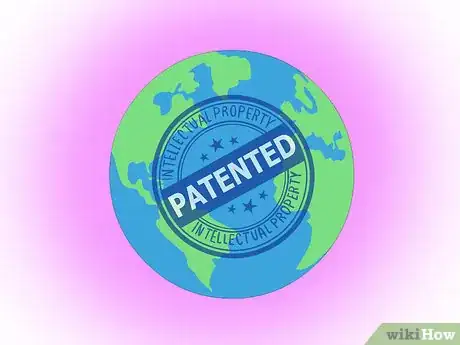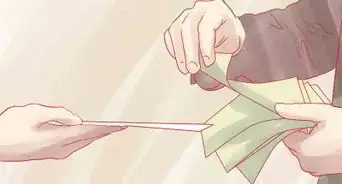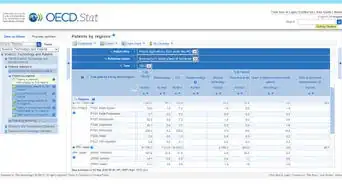This article was co-authored by Jeremy Rutman, PhD. Dr. Jeremy Rutman is a Patent Attorney and the CEO and Founder of RutmanIP, a boutique intellectual property firm in Israel. With over 15 years of experience, Dr. Rutman specializes in drafting patent applications in various fields such as physics, computer hardware and software, electrical engineering, mechanical engineering, green energy, and software. He holds a BS degree in Physics from Harvard University, where he graduated cum laude, and an MS and Ph.D. in Physics from the Technion - Israel Institute of Technology. Dr. Rutman has extensive experience turning start-up ideas into strategic assets and has published his work in many leading professional journals in the field.
This article has been viewed 90,227 times.
Did you invent a recipe that you're certain has never been tasted by the world before? You might have a uniquely delicious concoction on your hands, but in order to patent it, your recipe must be considered novel, non-obvious and useful. Home cooks and chefs have been mixing ingredients for thousands of years, so coming up with something completely new isn't easy. If your recipe doesn't meet these qualifications, there are other legal protections you can put in place to claim it as your own. Read on to learn more about how to patent a recipe.
Steps
Figuring Out if Your Recipe is Patentable
-
1Understand what makes something patentable. Section 35 USC § 101 on patent law states that "Whoever invents or discovers any new and useful process, machine, manufacture, or composition of matter, or any new and useful improvement thereof, may obtain a patent therefor, subject to the conditions and requirements of this title."[1] Recipes can fall into this category in two different ways, since they are always useful, they may involve a new process or technique, and they include a composition of matter. All of this is to say that recipes are indeed possible to patent as long as they meet the other requirements.[2]
-
2Determine if your recipe is novel. In legal terminology, "novel" refers to something that did not previous exist.[3] This is where things get tricky when it comes to patenting recipes. It's very difficult to determine whether a particular mix of ingredients has been whipped up in someone's kitchen before. There are a few forms of research you should undertake in order to see if your recipe is novel enough to patent.[4]
- Search the United States Patent and Trademark Office database to see if your recipe has already been patented.
- Search cookbooks and the Internet for your recipe. If you find the recipe in either location you may be ineligible for a patent because of an existing patent or the recipe will be considered already "disclosed" if it has been published elsewhere.
- If you cannot find an exact replication of the recipe, you can proceed to determining whether your recipe meets the other qualifications.
Advertisement -
3Determine if your recipe is non-obvious. If your recipe involves a technique or combination of ingredients that leads to unique, non-obvious results, it may be patentable. However, if your recipe is something that could easily be thought up by someone else, or involves techniques that lead to predictable results, it's probably not patentable.[5] Since most recipes invented by home cooks don't lead to results that would surprise a seasoned cook, they usually aren't patentable.
- Food companies are more likely to create recipes that are patentable, because they are able to use experimental processes and ingredients that lead to non-obvious results. For example, a patentable recipe might be one that uses a new technique to give it a surprisingly long shelf life.
- Simply adding a unique ingredient to a recipe isn't non-obvious enough to make it patentable. For example, an experimental home cook might decide to add cinnamon to a meatloaf recipe. Though the results might be surprisingly delicious, most home chefs could predict the flavor change that the addition of cinnamon would bring about.[6]
Applying for a Patent
-
1Decide what kind of patent you need. There are several different kinds of patents available and a recipe could fall into more than one category of patents. The Utility Patent protects new inventions that have a useful application. This covers new methods, processes, machines, manufactured items, devices or chemical compounds or any new improvements to any of these. Most recipes would fall under the Utility Patent category. The product shape or packaging may also be susceptible to protection under a design patent. In this case you could apply for one of those as well.
-
2Figure out where you need patent protection. Patents can be filed either in the United States or in other countries. If you feel that your recipe requires international protection, then you should apply for a patent in countries where you want patent protection.[7]
- The European Union offers a "European Patent Office" that facilitates patent applications for countries within the EU.
-
3Work with an attorney to file your paperwork. There are patent lawyers who specialize in filing the necessary paperwork with the United States Patent and Trademark Office. While you're certainly allowed to submit your own paperwork, the patent office recommends you hire a lawyer at this point to handle the flow of paperwork and make sure you submit all the required materials. Regardless of who does the actual filing, the papers are then submitted electronically to the patent office.
- The application cover sheet and list of required attachments can be obtained from the United States Patent and Trademark Office website, at uspto.gov.[8]
- The patent application should be filed either online or via regular mail (note that filing online will allow you to avoid the $400 "non-electronic filing" surcharge and speed up the process considerably).[9]
-
4Wait for your application to be approved or rejected. The US patent office will consider your paperwork and make a determination if your recipe is eligible for a patent. If you're approved, the patent office will contact you. After you pay an issue and publication fee, your patent will be granted.
- The vast majority of patent applications are routinely rejected. You should not take it personally. Examiners are required to enforce the rules diligently and it often works out to your advantage, resulting in a more valuable patent.
- If your application is rejected you have an opportunity to argue or to amend (narrow) the claims or to appeal the examiners' final decision. This often takes several years and thousands of dollars in filing fees and attorneys' fees.
- If your application is finally rejected and you abandon it, and you still want to protect your recipe, you can do so by protecting it as a trade secret.[10] Those who know the secret will be required to sign a non-disclosure agreement, and in this way you can prevent your recipe from getting leaked.
Community Q&A
-
QuestionHow do I make a new dessert recipe?
 Community AnswerFirst, make sure no one else has the same ingredients/idea. You will need to add the ingredients as you would if you were following a recipe. It may be best to write down the ingredients, so you can remember them and change things if it doesn't work right. This process will be a trail and error.
Community AnswerFirst, make sure no one else has the same ingredients/idea. You will need to add the ingredients as you would if you were following a recipe. It may be best to write down the ingredients, so you can remember them and change things if it doesn't work right. This process will be a trail and error. -
QuestionIf I combine two highly recognizable and popular food products into a highly novel product, can I file a patent on the process?
 Community AnswerYes, in theory, any new and non-obvious combination of existing inventions may qualify as an improvement invention on its own. You would need to do some searching on your own to see if anyone else has done similar things and then discuss your results with a patent attorney.
Community AnswerYes, in theory, any new and non-obvious combination of existing inventions may qualify as an improvement invention on its own. You would need to do some searching on your own to see if anyone else has done similar things and then discuss your results with a patent attorney. -
QuestionI want to protect my PVC compound recipe without filing a patent. What do I do?
 Community AnswerYou may be able to protect your formula and process by keeping it as a "trade secret." You protect a trade secret by making sure only authorized employees know how to do it and making sure they know they are required to keep it secret. A patent is a public document in which you must disclose how your invention is created.
Community AnswerYou may be able to protect your formula and process by keeping it as a "trade secret." You protect a trade secret by making sure only authorized employees know how to do it and making sure they know they are required to keep it secret. A patent is a public document in which you must disclose how your invention is created.
Warnings
- Once you file a patent application it will automatically become "published" within 18 months or so, unless you specifically request that it remains secret, and only if you agree not to file it in patent offices outside of the USA. Once it's published, any "trade secrets" revealed in your application will become public knowledge, whether the application is abandoned or becomes issued as a patent.⧼thumbs_response⧽
References
- ↑ http://www.law.cornell.edu/uscode/text/35/101
- ↑ http://www.ipwatchdog.com/2012/02/10/the-law-of-recipes-are-recipes-patentable/id=22223/
- ↑ http://www.uspto.gov/inventors/independent/eye/201306/ADVICE.jsp
- ↑ Jeremy Rutman, PhD. Patent Attorney. Expert Interview. 5 January 2021.
- ↑ Jeremy Rutman, PhD. Patent Attorney. Expert Interview. 5 January 2021.
- ↑ http://www.uspto.gov/inventors/independent/eye/201306/ADVICE.jsp
- ↑ Jeremy Rutman, PhD. Patent Attorney. Expert Interview. 5 January 2021.
- ↑ http://www.uspto.gov/patents/resources/types/utility.jsp#heading-1
- ↑ http://www.uspto.gov/patents/resources/types/utility.jsp#heading-1





























































